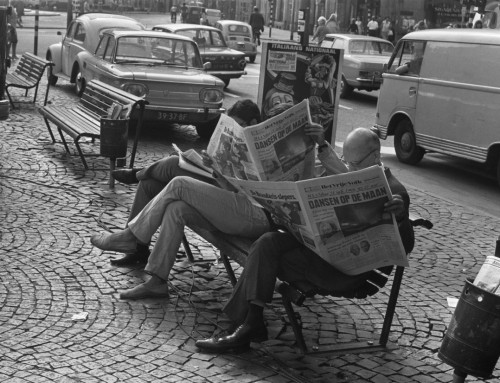HOW TIMES HAVE CHANGED
A close family friend of my family advised us that the Chartered Accountants’ firm of T H Ludgate & Ludgate were looking for a junior office girl. I obtained an interview with Mr. Len Ludgate the surviving partner of the firm as his father Mr. Thomas Ludgate had passed away in October of the previous year. It is believed that this firm was originally formed by a Mr. Langton in 1910 and then Mr. Thomas Ludgate purchased the business and commenced practice in 1919. He brought his son Len into the partnership in 1947. I was employed and commenced work the following Monday. About a year later the firm name was changed to Ludgate & Ludgate.
On 6th July 1959 I walked up the stairs at 369 Ruthven Street, Toowoomba and this began a complete new era in my life. The office was on the top floor of an old building owned by T K Lamb Estates who owned several buildings in the city area. We had to walk up a narrow stairway of 3 flights of stairs. The bottom floor was occupied by Noble & Gegg Chemists and Arch Kerr Music House. Our toilet facilities were along a long hallway to the back door then along 2 outside landings with boards spaced where you could see the roof below then down a flight of stairs at the back of the building.
I commenced my position as junior clerk typist and message girl. This included taking shorthand for most of the correspondence. As I had not done any shorthand for some time I needed to go to a commercial school studio a couple of nights a week to improve my speed and accuracy. Included in my job was to collect the mail each morning at the old Post Office in Margaret Street and each day after lunch, the messages, doing banking and to return books or deliver letters to clients around town, then post the mail in the afternoon at 5.00p.m.
The office staff consisted of 3 accountants including Mr. Ludgate as well as other staff of approximately 6 book-keepers, typists and receptionist. The office hours were from 8.10a.m. to 5.10p.m.with 1 hour lunchtime. These hours were the same as the shops’ trading hours at that time. Banks opened at 10.00a.m. each day Monday to Friday and on Saturdays from 9.00a.m. to 11.30a.m. The shops opened on Saturdays from 8.10a.m. to 11.40a.m. then closed until Monday morning.
Hotels trading hours were 10.00a.m. to 10.00p.m. Monday to Friday. On Saturdays they would open from 10.00a.m. until around midnight and the Sunday trading was 11.00a.m. to 1.30pm and then to 4.00p.m.for a couple of hours. Our office opened from Monday to Friday. I can’t remember staff working overtime on many occasions but not sure about the senior accountants. Each employee had a daily timesheet to complete. All the administration work for the practice was done by Mr. and Mrs. Ludgate outside the office including wages which were paid to us in cash in pay envelopes.
After about a year the Receptionist girl left to have her first child and Mr. Ludgate gave me the position. This meant that I didn’t go on many messages and I was the only person who had the lunch hour between 1.00p.m. and 2.00p.m. This included answering all telephone calls from a wooden switchboard consisting of 3 rows of push in/put out plugs with 3 outside lines. Each accountant had an extension line and some were connected in the general office for the other employees, approximately 12 extensions in all. I really enjoyed this part of my work where I got to know many business clients by voice. After a while they knew mine and many of them always acknowledged me in conversation when they came into the office for interviews with the accountants. As I received experience I was also involved in same book-keeping but mostly shorthand and the typing of Financial Accounts and all the different required returns.
We had no heaters in the office only your own small hand one in winter and in summer cooling was air from the front door and front office windows although I don’t remember too many uncomfortable days. We didn’t have what you would call a kitchen and we rarely had morning tea breaks and no afternoon tea break. One of the back rooms was used as a lunch room as well as a part-filing room. Mr. Ludgate operated a buzzer system for the typists and myself. My buzzer was 3 rings and if it sounded rather loud you knew you had done something wrong.
We had a large number of clients with many audits of large and small Companies, Solicitors’ Trust Accounts, agricultural, many medium and large local business, salary & wages, as well as Local Government audits which were allotted to select Chartered Accountants each year. Some of these were Toowoomba City Council, Dalby Town Council, Pittsworth Shire Council, Jondaryan Shire Council and Crow’s Nest Shire Council. We were usually issued with a different Council each financial year. We also prepared weekly payroll for Sugarloaf Colliery and Weis Frozen Foods from original records of employees’ times, sick leave, annual leave etc., including drawing the cash wages cheques and depositing the cash into employees’ pay envelopes.
All the processing of clients’ records was done manually. This entailed obtaining clients’ Cheque Butts and Bank Statements at interview with the accountants. Sometimes a book-keeping staff member would sit in at the interview and go through each cheque butt to make sure the expense items were correctly dissected. From there the records were passed out to staff to handwrite cash books and reconcile to bank records before giving back to the accountant for further processing. This would not be accepted by the accountant unless the Bank Account was reconciled.
These cash books were added in your head until we obtained the old handle operated adding machines. We had 2 to begin with. Then the book-keepers were given the task of preparing the Financial Accounts, usually Livestock Account, Profit and Loss Account, Depreciation Schedule (calculated manually) and Balance Sheet. From there the typists would type the Accounts and Income Tax Returns for the accountants to review and send to the client for approval and signing for lodgment when correct. Our letters were typed on old Remington typewriters with replaceable ribbons when the ink ran out. All work was typed in duplicate with a carbon copy. If you made a typing error you used typing rubbers. The typewriters were periodically serviced from time to time by the firm of Norman Evans and then an office of Remington Rand.
At that time all lodgment forms were pre-printed. Each year we would order a numerous number of Income Tax Returns from the Australian Taxation Office from order forms received each year requesting what supply we required and this was processed in late May/early June for us to receive the forms before 1st July each year. Each category of forms required being Company, Trust, Superannuation, Individual Tax Returns as well as State Land Tax Returns were quite considerable in number at that time. There were also Income Tax Returns ordered for United Kingdom and Papua New Guinea clients which had a financial period ending 31st December. The Workers’ Compensation Returns were issued pre-printed to each client and these were also manually prepared, typed and mailed to the Workers’ Compensation Board after completion and signing. We always had a copy of each document sent from our office and these were prepared by a carbon copy of the original (typed letters had plain yellow paper as the copy). Each client had a file stored in filing cabinets in alphabetical order with copies of all documents kept. Clients Group files were housed under the main entity name. Copies of fee accounts were also kept for each client every year and the copy was on green paper.
Some of the larger clients were Defiance Mills Ltd., Oakey Abattoir Pty Ltd (when owned by the Keong family), Lynch & Pollock Pty Ltd, Custom Credit Limited, Eagers Retail Pty Ltd, Pigotts Pty Ltd, Toowoomba Golf Club and most of the solicitors’ Trust Accounts around the city in additional to large taxation clients including Weis Frozen Foods, the family groups of directors of the large companies and some corner stores and construction work clients. One of these was Sheridan Constructions group. Some of the largest companies were structured with multi companies for different areas of their business and I can remember at least three of these we worked on involved Consolidation Accounts and Tax Returns for the groups. The final Consolidation Accounts were typed on the long-carriage typewriter which was an additional luxury to the office. These were typed on size A3 paper in quadruplicate which was a nightmare for any typing errors, with 7 and 8 columns of figures across the page and had to be reconciled to tax returns.
The tax returns were manually typed page for page in duplicate. The carbon copy of the forms was given to the clients for their records. Our copy was the hand written original prepared. The Income Tax and other Returns were prepared between July and February as 28th February was the last date the Taxation Office allowed lodgment.
When the original signed returns were ready for lodgment, they were then batched with a covering letter listing each return enclosed and given to Mr. Ludgate. He would then sign each return as Tax Agent. We would then date each return before posting to the Taxation Department, maybe a couple of times of week depending on volume. From the overall Taxation Office Client Listing received each year, one of my jobs was to mark off the lodged returns listing on the lodgment covering letter, leaving names of all non-lodged returns and at the end of December a written request was made for any extension of time required for lodgment beyond 28th February, listing the client name and file number. All Land Tax Returns were required for lodgment by 31st December each year.
The only audit work done in the period July to February was half-yearly Trust Account audits and interim audits for large companies. I think we audited about 8 of the largest solicitors’ firms in the city at that time. We also had a few sporting club audits where the fees were discounted to 50% cost.
The period from March to June each year was mostly dedicated to audit work and all staff were out in teams at the various city and country locations except myself and Mr. Ludgate. My job during this time was devoted to raising fee accounts. Only small tax return clients and interim audits received fee accounts during the months July to February and the balance were done in one exercise in April. I would spend most of April taking shorthand for each client account required and then Mr. Ludgate would give me until the end of May to type up the fees ready for review and posting when he returned from holidays(usually May/early June). All staff were required to take holidays between March and June only.
Mr. Ludgate was the Secretary of Sugarloaf Colliery, Menswear Pty Ltd, a member of many clubs and for many years was Director and then Chairman of Darling Downs Building Society (now Heritage Bank) together with Secretary of many organizations. I would take the minutes of monthly meetings of Sugarloaf Colliery and type them with (4) carbon copies. However, we got modern after a while and he would dictate these on a Dictaphone machine then I would type from records similar to a Record Player. As I was in Reception I typed with ear phones for professional reasons.
As the years passed we upgraded to more modern adding machines and a smelly liquid photocopying machine which could only do one copy at a time but saved some duplicated typing.
Mr. Ludgate was a keen squash player and a very good golfer and he competed with some of the businessmen clients as many were also personal friends. This was usually on a weekly basis on Wednesday and Thursday afternoons.
I was married in 1964 and left to have my daughter in April 1966.
This concludes the first chapter of my time with the firm of Whitehouse Accountants.







Thanks for sharing, Bev.
Those were the days, eh ?
Cheers,
Lyn from Roma.
What an AMAZING story Bev. I do recall, though rather vaguely, the original office. Frankie and I were young then. Mum, Pat Dowse, took us along to the office. It was a good opportunity to learn to save and how to prepare for tax. I was really surprised at how fast you could add mentally. I recall the old typewriters and copy machines.
I still have problems and even with the aid of a computer, have problems preparing a spread sheet. We were certainly spoilt by you! We enjoyed a trip to Toowoomba to have you prepare our tax. This is a great lesson in ‘History.’ I will copy it for my granddaughters.
Love and every best wish in your retirement years Bev. From Judy Carter